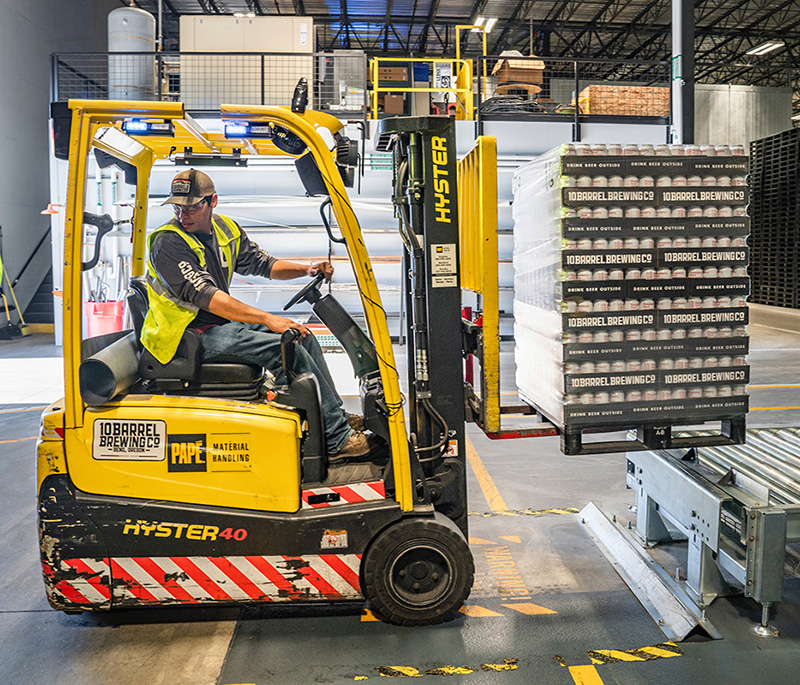How does it work?
Automation in business can cover a wide range of areas, from production to customer management and beyond. Here's a guide step-by-step instructions for getting started with automation :
1. Identify processes to be automated
- Analyze process existing Look for repetitive, time-consuming and error-prone tasks. These can include data entry, order management, invoicing, etc.
- Assessing impact Consider the potential impact of automation on efficiency, costs, and customer or employee satisfaction.
2. Choice of tools and technologies
- Searching for solutions Explore the available options that match your identified needs. This may include customer relationship management (CRM) software, enterprise resource planning (ERP) systems, robotic process automation (RPA) tools, etc.
- Compare features and costs Evaluate solutions in terms of functionality, possible integrations, cost and ease of use.
3. Automation planning and design
Automation may seem daunting at first, but by following these steps, you can simplify the process and achieve significant gains in efficiency and productivity for your business.

4. How to use
- Development or configuration Depending on the tool you choose, you may need to configure the software for your specific needs or develop custom scripts.
- System integration Make sure the automation tool can integrate seamlessly with other systems you use.
- User training Train employees to use the new tools and processes.
5. Testing and optimization
- Initial test Test automation in a controlled environment to identify bugs or performance problems.
- Collecting feedback Gather feedback from users to identify areas for improvement.
- Continuous optimization Adjust and improve the automated process based on results and feedback.
6. Maintenance and upgrading
- Monitoring : Monitor the system regularly to make sure it's working as intended.
- Updates Keep the software up to date with the latest features and security fixes.
- Evolution Be ready to adjust and extend automation as your business needs change.
Automation may seem daunting at first, but by following these steps, you can simplify the process and achieve significant gains in efficiency and productivity for your business.
What are the benefits?
Automation offers a multitude of benefits that can significantly transform a company's operations and the way it interacts with its customers:
- Cost reduction Automating repetitive and manual tasks reduces the time needed to complete them, thus cutting labor costs and operational expenses.
- Increased efficiency By eliminating the delays and errors associated with manual processes, automation improves the speed and accuracy of operations, resulting in better overall productivity.
- Minimizing errors Automated systems significantly reduce human error, ensuring high quality and consistency in the tasks performed.
- Improvedexperience customer The use of automation to accelerate and personalize customer interactions leads to increased satisfaction and loyalty. This can include rapid responses to customer queries, personalized recommendations based on purchase history, or more efficient order management.
By integrating automation into their operations, companies can not only optimize their internal processes, but also significantly enrich the experiences they offer their customers, putting themselves in a more competitive position in the marketplace.

How much does business automation cost?
Today's digital age demands constant efficiency and optimization of business processes. The automation of IT tasks and operations is an essential solution for companies seeking to stay ahead of the competition. competitive. This article explores the costs associated with implementing such solutions, while highlighting the potential benefits and savings that can be achieved in the long term.
Cost of a task scheduler
The task scheduler, a tool designed to perform a specific task at a defined time within an operating system, represents a relatively modest investment. With a cost generally not exceeding $10,000, it's an accessible first step to automation.
Cost of workload automation Workload automation, which enables processes to be orchestrated across various systems, requires a more substantial investment. Depending on the complexity of the company's IT infrastructure, the cost can range from $30,000 to $250,000. This automation solution is indispensable for sophisticated IT environments.
Automation in the commercial sector
In the commercial sector, automating routine tasks such as data management, planning, or the generation of official documents can free up valuable time. Costs vary according to the extent of automation, ranging from $2,000 for simple solutions to between $7,000 and $15,000 for complete business process automation.
Whereas a simpler solution, such as automating the transfer of data from a form web to Google Sheets, can start at $1,000.
And how much does it cost to go without?
Beyond the direct costs, it's crucial to consider the opportunity cost of not automating. By neglecting to automate, companies miss out on the chance to redeploy their IT staff to more strategic initiatives, thereby fostering the digital transformation needed to meet customer expectations and maintain a competitive edge.
Conclusion
Before defining a budget for automation, it is advisable to carry out a detailed analysis of current costsThis year's edition of the "Automation in the workplace" series highlights the crucial role played by automation in improving operational efficiency, as well as in business development and innovation.





